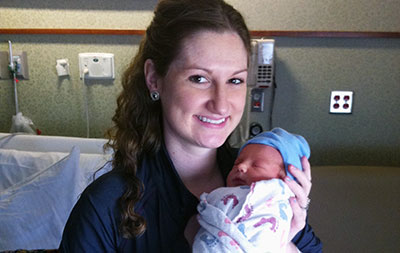Curriculum and Call
The following is information about Woodwinds Hospital Family Medicine Residency Program's curriculum and call.
Rotations
View rotations below for each year of residency and elective options.
Electives
Electives help residents personalize their training, taking into account future practice needs.
Global Health
Opportunities include international and global-local electives, courses, seminars, conferences, and fellowship.
Didactics
Designed around adult learning models and utilizes residents to lead and teach.
Programmatic Courses
The department sponsors several required and optional one- to two-day programmatic courses. Topics include women's health, sports and musculoskeletal medicine, community health, and more.
Call
View call information below for each year of residency.
Residents As Teachers
Family medicine residents are directly responsible for a portion of medical student clinical education during clinical experiences and clerkships.
Medical education features a closely connected cycle of teaching, learning, and progressive responsibilities; senior learners teach junior learners, and all learners are involved in ongoing professional and personal development.
Residents of the eight University of Minnesota family medicine residency programs have many responsibilities, including that of supervisors and educators. Most medical students encounter family medicine residents as teachers during the Family Medicine Clerkship. Therefore, residents receive instruction about clerkship/rotation goals and objectives as well as training in teaching methods.
Resources
Resources are available to aid residents in development as teachers.
- Residents Teaching Students: Developed by family medicine medical student education director David Power, MBBS, MPH, and colleagues, it provides an overview of several teaching strategies. One of these is a common teaching method used by both residents and faculty, known as the One Minute Preceptor.
- Resident Educator Development and corresponding Moodle site: Assembled by the University’s Internal Medicine Residency Program and Office of Graduate Medical Education.
- Faculty advisors and residency directors also can connect residents with resources to enhance teaching abilities.
Woodwinds Rotations
Dr. Newman does OB/Ultrasound on Thursdays, and an ultrasound tech comes on Mondays.
FIRST YEAR
First-year rotations focus on inpatient medicine, working one-on-one with family medicine and pharmacy preceptors.
- Teaching service, 12-14 weeks
- Emergency Medicine, 4 weeks
- OB, 8 weeks
- Surgery, 4 weeks
- ICU, 4 weeks
- Neonatal, 4 weeks
- Peds Inpatient, 4 weeks
- Peds Outpatient, 4 weeks
- CHAMP (Practice management and community health), 4 weeks
- Ortho, 4 weeks
SECOND YEAR
Second- and third-year residents have fewer required rotations and more time to focus on electives. They also spend more outpatient time in the clinic and have three weeks of night float each year.
Beginning the second year, residents are scheduled for nursing home rounds. These are done two times a month. We also see our clinic patients who are homebound or reside in group or nursing homes every 60 days for evaluation.
- Teaching Service, 6-8 weeks
- Emergency Medicine, 4 weeks
- Hospitalist, 4 weeks
- Hospice, 2 weeks
- Ortho, 4-6 weeks
- OB, 2-4 weeks
- Pediatrics outpatient, 4 weeks
- CHAMP (Practice management and community health), 4 weeks
- Psychology, 4 weeks
- Pharmacology, 4 weeks
- Electives, 4 weeks
THIRD YEAR
Second- and third-year residents have fewer required rotations and more time to focus on electives. They also spend more outpatient time in the clinic and have three weeks of night float each year.
- Teaching Service, 4-6 weeks
- OB, 2-4 weeks
- Peds ER, 4 weeks
- CHAMP (Practice management and community health), 4 weeks
- Geriatrics, 4 weeks
- GYN, 4 weeks
- Electives, 4 weeks
ADDITIONAL ROTATIONS REQUIRED IN PGY2 OR PGY3
- Cardiology, 4 weeks
- Infectious Disease, 4 weeks
- Neurology, 4 weeks
- Derm, 2 weeks
- ENT, 2 weeks
- Ophthalmology, 2 weeks
- Urology, 2 weeks
Woodwinds Didactics
Workshops, lectures, and activities
Residents are required to participate in one afternoon of lectures and interactive activities each week led by faculty, community specialists, and residents at Woodwinds Hospital.
Journal club
We practice critically reviewing journal articles. All residents are required to present a recent article for discussion three times throughout residency.
University-sponsored grand rounds
The U of M Department of Family Medicine and Community Health holds monthly grand rounds on family medicine topics.
Scholarly article
Work with faculty to write and publish FPIN articles.
Woodwinds Electives
"The parental newborn elective gave me a perfect balance of being a parent with a newborn and spending time in clinic."

Residents choose from a variety of electives, including:
- Parental newborn elective, allowing new parents to have additional time at home (2-6 weeks)
- Sports medicine, including team physician and sideline opportunities at a local high school
- Research elective with local faculty
Other electives have included pharmacotherapy, endocrinology, rheumatology, nephrology, radiology, geriatrics, GI, and high-risk OB.
Residents may tailor their own elective experience with off-site rotations.
Global Family Medicine
Global Family Medicine is an elective curricular experience where residents participate in structured international experiences to gain the skills and knowledge to care for our global citizens and communities.
Woodwinds Call
Overview
- Family-friendly night float system with intern and senior resident in-house at all times
- First year - seven to eight weeks/weekends doing labor and child-birth care
- Second and third year - three to four weeks/weekends doing inpatient medicine
Call rooms amenities
We have a separate call room on the OB floor for ease of access. Our senior call rooms have large windows overlooking the nature preserve. They are next to our spacious work rooms and have bathroom amenities, a kitchenette, and a treadmill.
Pediatrics call
The first-year pediatrics inpatient rotation consists of three weeks of day coverage and one week of nights at Children’s Minnesota Hospital — Minneapolis or St. Paul.